Emily Connor A2 Media Blog
Wednesday, 15 December 2010
Evaluation
In what ways does your media product use, develop or challenge forms and conventions of real media products?
http://www.youtube.com/watch?v=dIYVThkduAA
Our interviewee is looking straight into the camera to give the documentary a more personal feel and to appeal to the younger target audience making them feel like the Free Runner is talking to them about the sport. Interviews where the interviewee is looking straight into the camera are seen in Grizzly Man, a real media product, as shown in the images below.


Our newspaper advert is like other Channel 4 adverts with the logo on the right hand side of the advert and through the use of an image which creates enigma about what the documentary is about. It is similar to the poster for Disarming Britain as the image in this poster signifies the dull and grim side to Britain with the grey wall in the background and our brick wall signifies the urban life and the urban sport.


Question 2
How effective is the combination of your main product and ancillary texts?
http://prezi.com/xpc8iepvqgl4/how-effective-is-the-combination-of-your-main-product-and-ancillary-texts/
Please click on the link above if Prezi does not load.
Question 3
What have you learned from your audience feedback?
http://www.youtube.com/watch?v=OxMHKZ5BAiY
To conclude from our audience feedback, if we were to do the project again, I would add more interviews with various people in the documentary and also use less of the tricks because some of them begin to look the same and this repetition is what I think made people bored. If we were to do the radio advert again, then i think we should make the narrator sound more interested in the sport and excited about the documentary rather than sounding quite bored and like he is doing it as if it is a chore. This will not make people want to watch the documentary. For the newspaper advert, if we were to recreate this, we could possibly reconsider our original option with the image of the Free Runner but make it more interesting than it was. This way, we could still have the mystery that the audience liked in our final advert but also use something which is more related to the sport which others said would make it more obvious what the documentary is about and probably make them want to watch the documentary a bit more.
Question 4
How did you use new media technologies in the construction and research, planning and evaluation stages?
Monday, 27 September 2010
Genre Analysis
http://www.youtube.com/watch?v=Gkf11iER1Kw&feature=related
TYPE OF DOCUMENTARY
This documentary is an investigative and crime documentary which reflects on what has happened. It is 25% what has happened and 75% why it happened. The Devil Made Me Do It is also a mixed documentary as there is a combination of voice overs, observations, reconstructions and interviews with police officers, Marilyn Manson and his entourage. All of this content is used to add drama to the documentary to keep the audience interested and entertained.
THEMES

There are many themes in this documentary. They are:
- Music
- Murder
- Violence
- Religion
- Youth
- Gothic Influences
- Sadness and Grief
- Strife
- Crime
- Rebellion
- Morality
NARRATIVE STRUCTURE
The narrative structure can be both linear and circular. It is circular because the opening of the documentary is about the murder of the nun and when it happened before going back in time to before the event to try and work out why it happened and what the girls' motives were. The narrative can also be considered as linear as it follows the events in a chronological order apart from the opening. After this though, the narrative moves on to the girls planning the murder, admitting to the murder and then the outcome and sentencing to life returning to normality.
CAMERAWORK
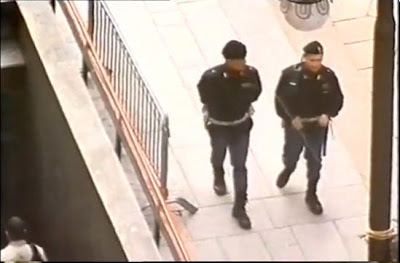
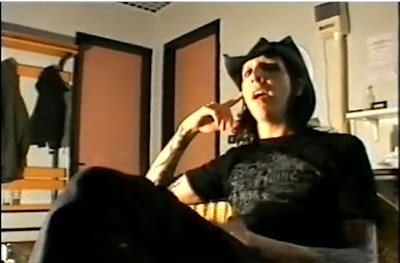
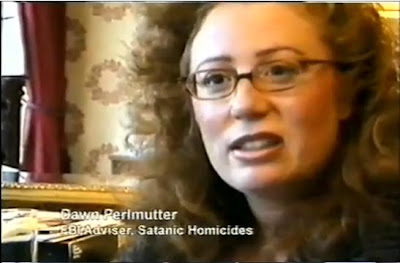
There are no visual accounts in this documentary but their area lot of interviews which means talking head shots where it is only the interviewee's head in the shot. Other camerawork on the interviewees include a low angles and high angles on the police officer depending on what the content of the documentary is at the time. Low and high angles are also used when Marilyn Manson is in the screen. The low angles make him look more superior and powerful and the high angle shots are used when he is getting blamed for the murder. Another low angle shot is used when we see the cross on the church which makes Jesus look more superior to us. There is a lot of hand held camerawork and point of view shots in The Devil Made Me Do It to make us feel like we are actually there even though there are no visual accounts. Long shots are used when real CCTV footage is displayed. This matches the investigative style of the documentary.
MISE-EN-SCENE
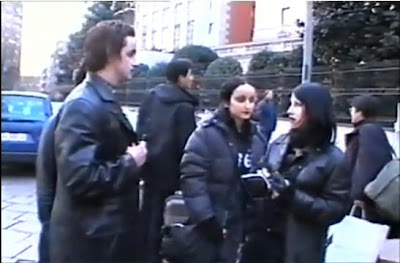
The mise-en-scene is constructed to offer us a visual stimulus. The costume and make-up is Gothic due to the fact that the documentary is filming Marilyn Manson fans. The wide shot when Manson walks across the square in Italy makes him stand out and look rebellious as he is different to everyone else, he doesn't fit in with the society. This is constructed to put the blame on him again. The interviews are all filmed in their natural environments and we see shots of the place of the murder making the documentary seem more realistic. When we see the murder scene at night with the dull streets lit by orange/red street lights it creates prophetic fallacy causing the audience to consider both arguments of the documentary to come to their own conclusion. The props that are used have a religious presence, including crosses and Christ statues linking to the nun who got murdered and the theme of religion in The Devil Made Me Do It.
SOUND
In this documentary, sound is used instead of pictures and accounts of the murder. These non-diegetic sounds include hearts beating, telephones ringing and screaming. They have been used to shock and evoke emotions in the audience, especially the sounds of the knives and the stones which were used to kill the nun. Other non-diegetic music includes the dark, demonic, Gothic music which contrasts the religious, spiritual choir harmonies at the beginning of the documentary. Diegetic sound includes the dialogue in the interviews and synchronous music when we hear the Marilyn Manson concert and watch him perform. All of the sound is parallel to the content of the documentary and the images we are seeing at that time. There is also a voice over throughout the Devil Made Me Do It to ensure that everyone understands the story at that point, as well as to back up points and expand on them, and tell the story of some parts that just images won't do.
EDITING
The editing in this documentary matches the content. There is a fast pace to the editing during the scenes of the concerts and then slow editing during the emotive scenes. the editing is like a sandwich of slow emotive editing, fast pace editing for the concerts and then back to slow and emotive for the funeral of the nun. The cut aways selected are always relevant to the story at that time, for example, cutting away to reconstructions of the events leading up to the murder and after the murder. There are a lot of long takes and long shots used when the narrative is at its most important parts. Other editing techniques include match on action, shot reverse shots and eye-line match makes us feel like we are the nun.
ARCHIVE MATERIAL
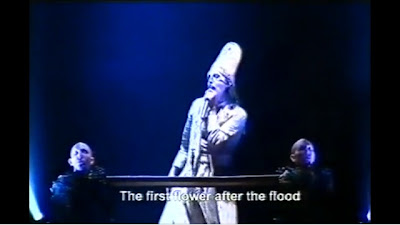
News clips from when the event happened and from during the court cases, CCTV footage, music videos, concert footage and trial footage are all examples of archive material used in this documentary. Clips are also reused from earlier moments in the documentary. One example of this is the shots of the murder scene are the same ones but just reused whenever we see them again, like a motif in the documentary. The music videos are shocking for some of the audience due to the things that Manson is doing in them and the clothes he is wearing, linking to the accusations that the murder was his fault. The archive footage of the nun's funeral has a dramatic and emotive effect on the audience making it prove difficult for them to come to a clear conclusion about the cause of her death at the end of the documentary.
GRAPHICS

There are not many graphics used in The Devil Made Me Do It apart from the title, names, places and dates. The font that is used for the title is a religious font linking to one of the themes in the documentary yet the colours used, black and silver, give it a Gothic edge. This title combines the two main themes of the documentary together which allows the audience to understand the content of the documentary before it has started, giving us an insight as to what the subject of it is. The writing used for places, names and dates is just a simplistic white font so not to distract us from the interviews and the moving images on screen. Another example of graphics used is the subtitles used in the concert so we can tell what Manson is saying.
GRIZZLY MAN
http://www.youtube.com/watch?v=cFyaiqDXD2U&feature=related
TYPE OF DOCUMENTARY
This documentary is an investigative and informative documentary as it informs us on Timothy Treadwell's experiences whilst investigating him as a person, his beliefs and his death. Grizzly Man is also a mixed documentary because it contains a combination of observations, voice over and interviews with people involved in the organisation which Treadwell set up as well as people who were close to him.
THEMES

The themes in Grizzly Man include:
- Wildlife
- Nature
- Bears
- Danger
- Challenges
- Death
- Mourning
Bears living in the wildlife with other nature is a main theme in this documentary as it is what Timothy Treadwell believed in the most. The principal theme of the documentary is death which is followed by mourning. This is because the documentary is investigating his death by talking to people who are mourning his death as well as people who were involved in the reason why he was out there with the bears which killed him.
NARRATIVE STRUCTURE
This documentary does not have a clear narrative structure as it could be classed as linear or circular. It is linear in the sense that it shows is the footage that Timothy Treadwell filmed on his expeditions in the order that he filmed it. We know this because the either the voice over tells us or their is a graphic on screen, for example, at the end their is a graphic on some pf his footage telling us the date and how long before his death it was filmed. The narrative can be circular because it is continuously returning to the death of Timothy Treadwell and his companion, Amie Huguenard, during during the interviews.

CAMERAWORK



The majority of the camera work has been filmed by Timothy Treadwell on his journey so it is handheld making it shaky and realistic. When he films himself talking to the camera he creates a talking head with him on either side of the frame in a mid shot. However, he looks into the camera rather than away from it as he is talking to the camera and not anybody else. He has filmed close ups of the bears to show their features and the danger of them. These shots also emphasise how close he was living to the bears and how close he got to them. Full shots are also used during the fight between the two bears which shows the height of them. They are also present to show the audience the full action of the bears in other situations as well as with the birds eye view which is filmed from a helicopter. This shot gives us an idea of the size of the place where he was living and protecting the bears. In some parts of the interviews, for example during the interview with the ecologist, the camera zooms in as they begin to make their point to underline their point of view or the evidence being given. Some of these interviews see the interviewee in the middle of the frame talking to the camera rather than the interviewer to give the documentary a personal edge and make us feel like we knew the Grizzly Man.
MISE-EN-SCENE



The mise-en-scene in this documentary has been constructed carefully to provide a visual stimulus, even in Treadwell's footage where he has the bear or other animals he is talking about in the background of his monologues. Other examples of this are when the pilot of the plane which dropped Treadwell and Huguenard off at the scene of their deaths is interviewed, his plane is in the background until he moves off into the land and creates a mini reconstruction of his memories of the day, showing the audience where he found the bear which killed them and where he found them. Another example of this is the interview with the helicopter pilot who helped find Treadwell and Huguenard, the helicopter is in the background and he is wearing his uniform. The interview with his parents shows his Mother in their home holding onto his favourite teddy bear as a child. We see another teddy bear in Timothy Treadwell's footage which he took on his adventure with him.
SOUND

The sound at the beginning of the documentary is slow emotive music to establish the sombre mood of the documentary as it is investigating his death. This is also the same with the slow guitar music that is heard, except this music has an edge to it to make it more interesting, reflecting the documentary. Their is a voice over in this documentary as well as the dialogue of Treadwell. Sometimes, we can hear the questions that the interviewee is being asked by the man who has done the voice over, as he is the one interviewing them. Some of these interviews feel very scripted which causes awkward moments and pauses after they have finished what they are saying but the camera is still filming. This also gives the sense of slow camera work and the pauses can represent the loss of Timothy Treadwell and Amie Huguenard.
EDITING
With regards to editing, there are some fades between parts of the action, mostly when switching between original footage and archive material, creating a link between the two of them. Other editing includes jump cuts, which there are a few of in Grizzly Man, for example, during some interviews, there are jump cuts so we only get to hear what the editor has chosen for us to hear. There are also many long shots in this documentary, most of which are filmed by Treadwell and they need to be the length they are so that we can see all of the action, for example, during the bear fight, we got to see it all in one long take.
ARCHIVE MATERIAL


Grizzly Man relies heavily on the archive material which Timothy treadwell filmed. Though it could be argued that this does not completely class as archive material as it was filmed to be part of a show, it was not filmed by the producers of the documentary. The archive footage is some of the 100 hours which he filmed over the 5 years that he was living with the bears in their natural habitat. Other archive material is the images of Treadwell when he visited schools to talk to the children about his beliefs and the images of him on his travels as well as those of the bear which killed Timothy Treadwell and Amie Huguenard. Therefore, the still images used show his whole journey from before he went to while he was there and then his death. Archive material is also used from when Treadwell appeared on television to explain why he was going to live with the bears.
GRAPHICS

There are very few graphics used in Grizzly Man other than to introduce people and tell us when footage was filmed. These graphics are small and white. The title for the documentary is shown at the beginning in a white font which is all in capitals and stands out against the calm background with he bear in a field.
LOOSE CHANGE
http://www.youtube.com/watch?v=7E3oIbO0AWE
TYPE OF DOCUMENTARY
Loose Change is an investigative documentary that investigates all of the unknown facts about the American terrorist attacks of 9/11. It can also be classed as a mixed documentary as it involves combinations of graphic reconstructions, voice overs and observations. It does not include many interviews but films sections from books, papers, newspapers and websites to reinforce the side of 9/11 that the creator wants to show, and make people believe.
THEMES
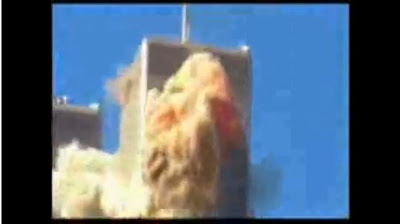
Themes in Loose Change include:
- Politics
- Terrorism
- Crime
- Conspiracy Theories
- 9/11
- Government
Terrorism and crime are both themes because the planes which crashed into the twin towers was seen to be a terrorist attack but this documentary focuses on telling a different side to the events of that day that involve the American government and politics being aware of what was to happen as they had taken part in the planning.
NARRATIVE STRUCTURE
This documentary is full of documenting facts and doesn't really follow a particular narrative structure. It could be argued that it has a linear structure as it goes through evidence that he has created from days before the attacks, building up through the following the days in chronological order, explaining all of the theories up to the conclusion. However, Loose Change does a lot of skipping time and going back in time to show us more facts and paper clips giving it a hectic sense.
CAMERAWORK

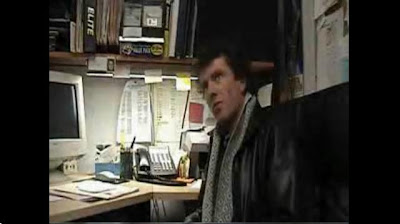
There is a limited amount of camerawork to analyse as it is mainly footage of articles that have been put into a slide show style presentation. Close ups are used for showing all of this information in an attempt to make the audience feel closer to the evidence. Hand held camera is used on the footage that is filmed making the documentary feel hectic and slightly rushed. The usual mid shot, talking heads are present in interviews.
MISE-EN-SCENE
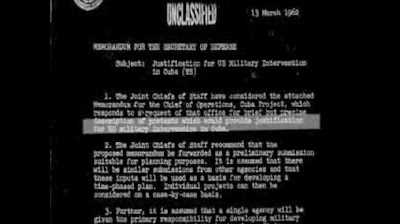
There is very little mise-en-scene that has been specifically created in Loose Change due to the fact that it is mainly still images of documents and websites. On the other hand, light is very important and is used in a way to highlight the parts of text where the information is coming from.
SOUND
The documentary begins with a tension building combination of drums and high pitched piano type sounds that match the beat of narration. The evidence is presented through the use of a voice over that narrates all the way through. Other sound includes archive material of radio and telephone conversations as evidence for the conspiracy theory. The diegetic sound of the planes crashing into the World Trade Centres is heard when archive material from the attacks is shown.
EDITING
The editing is generally just simple cuts to different document extracts. Cross fades are also used to give the audience lots of information on the 9/11 attacks. The simple editing used allows the audience t focus on the vast amounts of new knowledge that we are being shown as to not get confused because you have to follow every point to be able to understand the documentary.
ARCHIVE MATERIAL
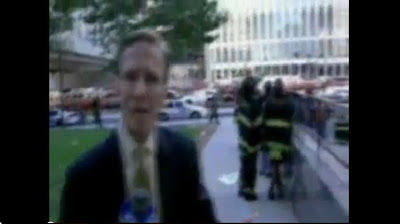
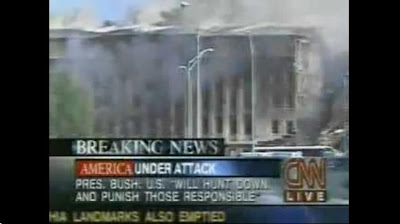
Loose Change is based on archive material showing clips of documents, websites and newspapers. We also here sections of news reports and radio transmissions and phone calls. All of this archive material has been carefully chosen to back up the director's point of view on 9/11. We are shown moving footage from the events in question as well as still images and photographs of the people involved that were in the tower or the fire service or government.
GRAPHICS
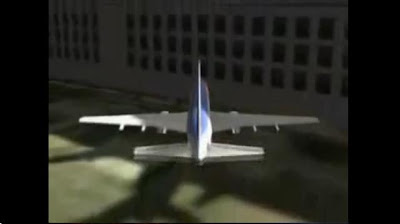

There are many example of the use of graphics in this documentary including the dates, places and names in white typewriter text. The main example are the constant reconstructions of what is said to have happened and adding graphics onto the top of archive material, such as the target sings where the flashes appear as the towers are collapsing. Graphics are also added to the top of the evidence such as lines like highlighters and circles to focus our attention on the points being spoken about. As well as this, sections of text are also made to 'light up' as the rest is darkened to once again draw our attention in to where the narrator is getting his facts from, making the theory more believable for the audience.
THE METH EPIDEMIC
http://www.youtube.com/watch?v=9Kw3xYTwv00
TYPE OF DOCUMENTARY
As with the other documentaries, The Meth Epidemic is an investigative documentary with elements of crime and science. It is also a mixed type of documentary containing voice overs, observations, reconstructions and interviews with police and users of the drug.
THEMES
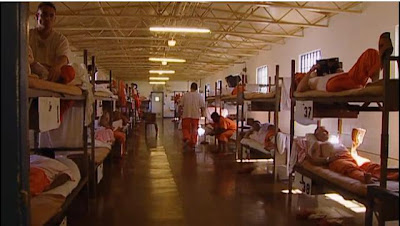

The themes in this documentary are:
- Drugs
- Reality
- Crime
- Addiction
- Abuse
- Government
- Trends.
Reality is a theme because the documentary focuses on real life situations and not fiction to make the documentary more shocking as it allows the audience to adapt the situations shown and see how it would affect their own lives, discouraging them to take the drug. Trends are a strong theme in The Meth Epidemic as the documentary continuously refers to the trends of the drug through the use of a graphic chart.
NARRATIVE STRUCTURE
This documentary follows a linear narrative with the story going from the start of the Meth epidemic through to the end passing through most of the years and focusing on the ones where the trend either drastically dropped or raised and analysing why this happened. It also follows a parallel narrative due to all of the stories of the users and addict which are all different but joined together by the drug Crystal Meth.
CAMERAWORK
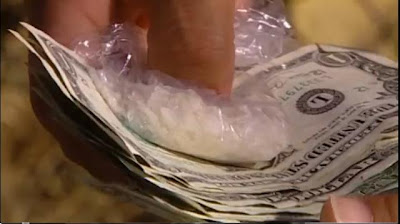

As they are a convention of documentaries, a lot of talking head shots are used to show the interviews, with the name appearing on the screen as well. Close-ups have been when in chemists to focus on the drug and alternatives to the drug that the addicts have used as well as using them in the raids to draw the audience's attention to the findings of the police. The Meth Epidemic includes clips of footage from the scene itself where they are cooking the drug as well as hand held archive material when the police are making their arrests and raiding properties and Crystal Meth plants. There is also a lot of static camera work giving the documentary a clean finish. The Meth Epidemic has obviously been produced on a very high budget so it has used a lot of their own shots from lots of different locations around the world.
MISE-EN-SCENE
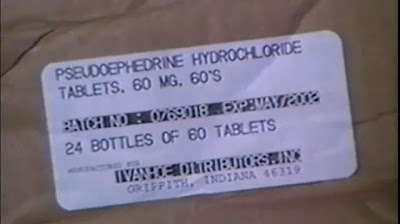
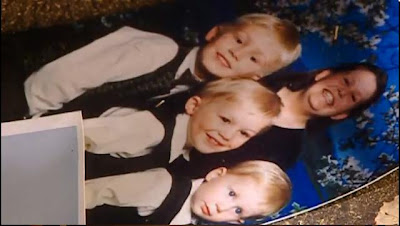
All of the mise-en-scene in this documentary has been constructed to offer us a visual stimulus for the documentary. Props such as pictures of families braking apart have been used to create an emotive effect on the audience. Other props used also include pill bottles ad pills linking to the subject matter of The Meth Epidemic.
SOUND
The sound used in this documentary matches the images on screen, for example, police sirens when raids and arrests are taking place. Both the diegetic and non-diegetic sound reinforces the story of the documentary. Non-diegetic music includes depressing music to create emotions in the audience which changes to more upbeat and positive music to add hope to some situations in the documentary.
EDITING
The pace of the editing in this documentary matches the pace of the content changing depending on the interpretation that the producer wants the audience to have. It is fast editing during the hand held raids to give the audience the feeling that they are part of the raids and then it is slow to match the emotive feelings at the end of the documentary when the woman is talking about her addiction and losing her children because of it. Also at the end, there is a close up on images of her family which are blowing in the wind before they fade away to black. This represents her past life and children fading away from her because of her addiction to Crystal Meth. The effect that the drug had on her life can never be restored which is what the fading pictures show.
ARCHIVE MATERIAL
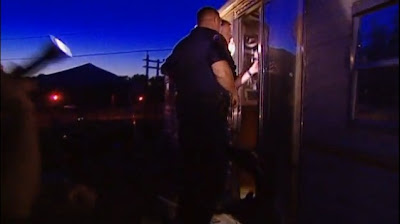
Archive material involved in this documentary includes police reports of the addicts over a period of time as well as the mentioned footage of the raids. However, a very small percentage of this documentary is archive material due to it being a high budget production.
GRAPHICS
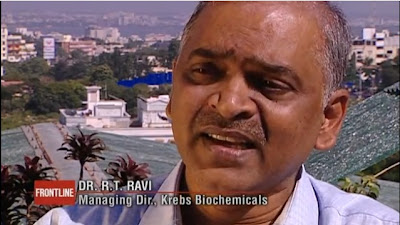


Graphics in this documentary are used for the title and names but as well as this, the use of charts to show the trends. This chart is constantly referred to as the documentary moves through the dates showing the peaks and troughs in the Crystal Meth consumption in America and the amount of it available.
MADELEINE WAS HERE
http://www.youtube.com/watch?v=lhACS6ck-Dw&feature=related
TYPE OF DOCUMENTARY
Madeleine Was Here is an investigative documentary investigating the crime involved in a missing child, Madeleine McCann, after nearly two years. It is also a mixed documentary involving voice overs, interviews and reconstructions.
THEMES

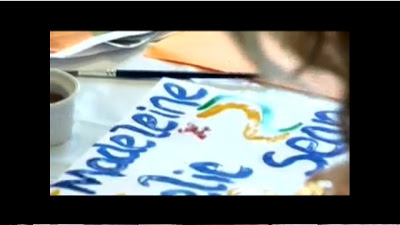
The themes in this documentary are:
- Abduction
- Loss
- Crime
- Family
- Tourism
- Investigations
- Vulnerability
Tourism is a theme because the place where the young vulnerable girl went missing from her family's holiday apartment was abroad in Portugal and it was tourists who had all the information that they had seen in order to create the reconstruction.
NARRATIVE STRUCTURE
The narrative of this documentary fits in to two of the options, circular and linear. It could be circular because it starts with the explanation of when the parents realised that Madeleine had gone missing and ends with her still missing, therefore the search for her still doesn't have an end so is continually moving in a circle returning to attempts that have already been made to find her. The documentary could also have a linear narrative as it follows the family around showing the events of the weeks that passed in chronological order, following them around their home time, to Portugal for the reconstruction and to America for TV appearances to try and find her.
CAMERAWORK


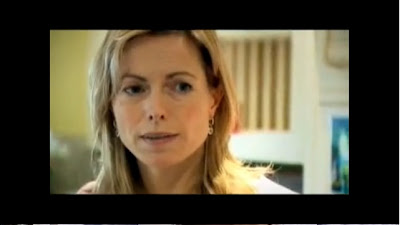
There are lots of close ups on faces to show us the emotion in them making the audience feel emotional. Close ups are also used on hands when they are reaching for documents on the case or flicking through pictures and packing and typing. This gives the documentary a personal element to it making the audience feel like they are part of the family, trying to imagine what it must be like for them to go through it. Other camerawork includes the inevitable talking heads for interviews with the parents and friends of the family along with many more. We also get to see the reconstructions which use a variety of camera angles, most of them being wide, full shots to try and give as much information in them as possible as just one little thing in a reconstruction could remind someone of something that might help.
MISE-EN-SCENE
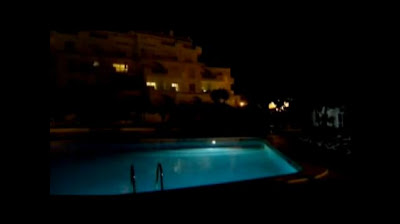

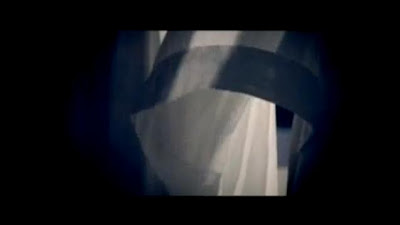
There are many props in Madeleine Was Here, for example, the paper work which matches the investigative style. The majority of the documentary is set in a house environment which is supposedly a safe place to be but it is where Madeleine was abducted from. During the reconstructions, the lighting used has a mysterious feeling to it as it filmed at night in an attempt to make the scene identical to how it was that night.
SOUND
The sound used matches the content of the documentary with tingling emotive piano music in parts where emotions are high in the family, for example when her Mother is looking through old pictures of Madeleine. There is a female voice over explaining elements of the content as well as asking questions to the interviewees. Other sound is heard when we see archive footage of family videos where we hear Gerry McCann asking Madeleine questions, showing that they were a cheerful family until the events of May 2007.
EDITING
The editing is once again just very simple cuts to not distract from the content of the documentary. The editing is very slow paced to match the depressing theme in the documentary and it allows the audience to focus on the emotion behind the people involved.
ARCHIVE MATERIAL
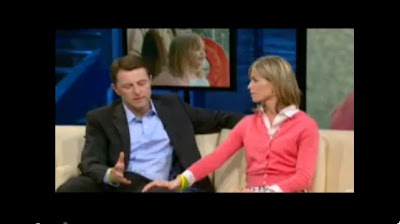
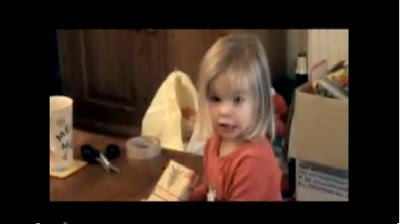
The archive material in this documentary is mainly family videos of Madeleine when she was younger as well as photos of her. Other archive material includes the footage of the reconstructions as even though the producers of the documentary went to Portugal for the reconstruction, they did not film their own version of it but used the one that they made. This isn't obviously archive material though. There are also clips from the Oprah Winfrey Show that Kate and Gerry McCann appeared on during their trip to America.
GRAPHICS
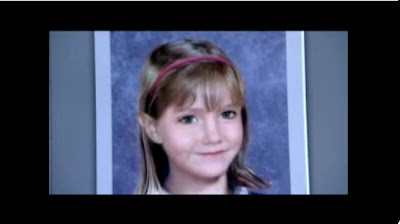

Graphics in Madeleine Was Here are used for the title and names of people. The title is simple white writing on a black background which connotes the good of Madeleine and the evil of the person who took her. The dates, names and places are also in this same simplistic white font to not distract our attention completely from the documentary. When the McCann's are in America, they receive a new picture of what Madeleine would possibly look like as a nearly 7 year old girl. This picture had been created using computer graphics by combining pictures of Madeleine, Kate and Gerry together. This picture is shown to the audience on the screen next to the picture that we all associate with Madeleine McCann to show the differences, therefore, it is an example of some of the clever graphics that can be used to create many different things.
THE MIRACLE ON HUDSON RIVER
http://www.youtube.com/watch?v=QkKL29F4C4E
TYPE OF DOCUMENTARY
Miracle of Hudson River is an investigative documentary about the plane that crashed into the Hudson River and all of the passengers survived it. It investigates the miracle from the beginning when the engines first went to when everyone had been rescued. It is also a mixed type of documentary with a combination of voice overs, observations, reconstructions and interviews with some of the passengers.
THEMES
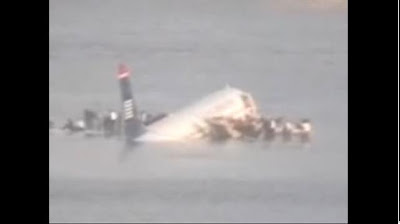

The themes in this documentary are:
- Aeroplanes
- Holidays
- Families
- Life
- Fear
- Disaster
- Miracles
The theme of families is portrayed at the very beginning when the passengers from the plane that are telling their stories in this documentary are first introduced in their home environment with their families around them. The two contrasting themes of disaster and miracles are present because originally the flight was a disaster after having been in the air for around three minutes, hitting a flock of geese and losing power to both engines. However, as the plane landed in the river and continued to float, it was a miracle especially when all of the crew members and passengers got off the plane alive. This links to the theme of life.
NARRATIVE STRUCTURE
The narrative structure for this documentary is circular because it begins with some archive footage of the crash and some quotes from the passengers on board which we later hear again. After this opening, in returns to the start of that plane's journey following a linear narrative of the events from the start of the passengers' day to being reunites with family after the crash. It could also be said that it follows a parallel narrative as it is all different versions of the stories and different people on the plane for different reasons but then their days are linked together with the common theme of the crash.
CAMERAWORK
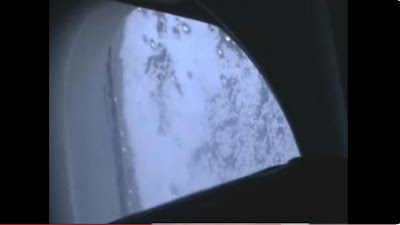
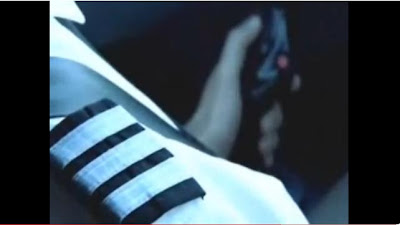

This documentary consitsts of many talking head shots because it is told from the point of view of the passengers involving interviews with them and the people who helped to rescue them off the plane and to dry land, including the boat drivers and police. During the reconstructions, close ups are used to concentrate on certain elements of the plane, for example, a close up of a window with ice crystals on it is constantly referred to. These close ups give the effect that we are on the plane and the reconstruction is showing what we would see if we were.
MISE-EN-SCENE
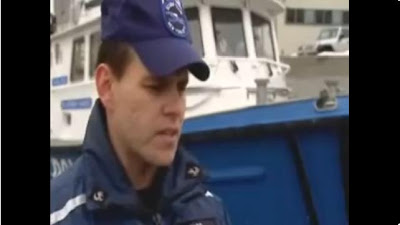
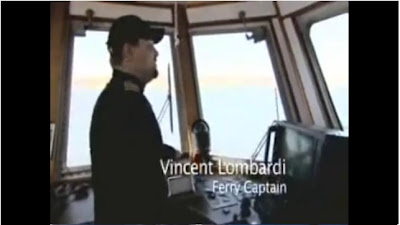
The mise-en-scene in this documentary, as with the others, has been constructed to offer us a visual stimulus. The people who are being interviewed about the rescue are wearing their uniforms in the clips to show us who they work for and so that they differ from the passengers who are wearing casual clothing and are being filmed in their home environment. The settings for the workers interviews are on their job, for example the boat driver is interviewed on his boat and the fire and police officers are interviewed at their stations.
SOUND
There is a calming female voice over in Miracle on Hudson River which contrasts to the action on screen. Other non-diegetic music is the dramatic drum beating music in the background which builds up tension as the plane is getting closer to the water. As the CCTV footage of the plane crashing is shown, all of the sound stops and there is just silence as the footage is repeated over and over again. This gives a shocking effect to the documentary, stripping everything away apart from the images. Emotive music then begins as the thoughts of the passengers are played over the images of the reconstructions and archive material.
EDITING
The editing in Miracle on Hudson River matches the content of the documentary with fast and sharp cuts during the dramatic scenes contrasting with slow paced calm editing. The editing turns to being fast, flicking between reconstructions of the plane getting lower and lower and closer to the water and the stories of the passengers. The slow editing comes after the crash has happened, a bit like the 'calm after the storm' saying.
ARCHIVE MATERIAL
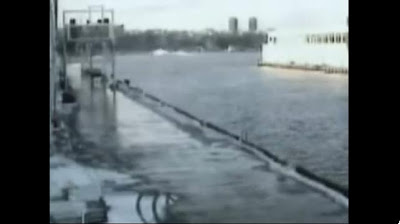

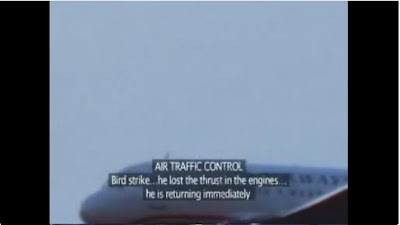
This documentary is heavily reliable on the archive material present. Examples of this material are weather reports from the radio on the day of the crash saying how cold it is. Other sound that is from archive material is recordings of phone calls to 911 all saying the same thing about the plane crashing, radio clips from the plane, other planes and helicopters. Images of the pilot and children and families of the passenger are also used in the documentary. News reports from that day, after they were rescued and as they were being rescued is also used. One of the most emotional clips is when the Father and Son who got seated separately on the plane, are reunited, and the documentary has included the news clip of this happening. CCTV footage has also been used, being the only way of seeing the plane crash onto the Hudson River.
GRAPHICS

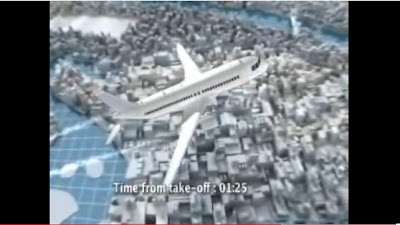
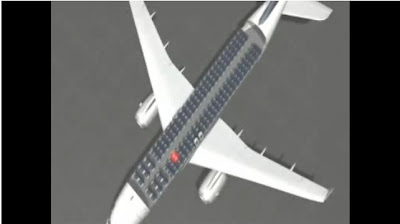
Graphics have been used in this documentary to create images of the plane which allow us to see where people were sitting so we can attempt to imagine the path they had to take to safety. There are also some graphic reconstructions as well as the filmed ones. The obvious graphics for the title, names and times are also used as well as subtitles for the phone calls and radio clips.
COMPARING MADELEINE WAS HERE AND THE MIRACLE ON HUDSON RIVER ESSAY
After analysing two documentaries, Madeleine Was Here and The Miracle on Hudson River, conventions of a documentary were clear. There is convention in the type of all documentaries as they are always investigating something, in the case of the above, a missing girl and a plane crash. Therefore a documentary is an investigative form of entertainment where the mise-en-scene is constructed to offer us a visual stimulus. The themes within a documentary however, can be about anything. Some of the themes in the above mentioned documentaries include abduction, loss, family, and crime. Other documentaries which I have watched have themes such as drugs, murder and religion.
Narrative structures in documentaries can either be linear, starting at the beginning and going through the events in chronological order, parallel, with more than one linear pathway that all link together at some point and circular, where the narrative starts at the end returning to the beginning to try and explain what happened. Madeleine Was Here has a linear narrative as it follows the events of Madeleine McCann’s parents, Kate and Gerry, two years on after the disappearance of their daughter and the time running up to the reconstruction of the night and making sure that everyone still remembers her. The Miracle on Hudson River is both circular and parallel as it begins with CCTV footage of the plane crashing into the water and yet it tells the story of about seven of the passengers including their families and their views and experiences from the crash. It is therefore parallel because it is everyone’s separate lives joining together in one situation.In terms of camerawork, there were a lot of close ups used in both Madeleine Was Here and The Miracle on Hudson River. This gave the audience the feeling that they were part of what was going on, in particular in Madeleine Was Here; it gave us the sense of being part of the family. This helps the audience to understand the issue behind the documentary giving the opportunity to make it personal to you. Close ups were also used in The Miracle on Hudson River but not as often. Talking Head shots are a main convention of camerawork in documentaries. This is when people are being interviewed and it is only their heads in the shot. This is a convention because interviews are always the main part of a documentary as this is the way to get opinions and facts across to the audience so they believe your point. Camera angles are used in reconstructions to create the feeling as though you were there, like close ups. The angles only show certain parts of the reconstruction, for example, in The Miracle on Hudson River, the camera follows the floor of the plane and focuses on windows rather than showing the whole plane. On the other hand, Madeleine Was Here used full, wide angled shots to show the whole happenings of that night in the hope to have something that will remind anyone of anything they saw which could help the police and family find Madeleine McCann.
Sound conventions include voiceovers, dialogue, emotive music and it usually reinforces the story matching the content on the screen. Voiceovers help the audience to follow what is going on in the documentary. In the two documentaries I have analysed, a woman narrated over the top of the images what was happening, for example, when the McCann parents were packing, she would explain why, when they were in the car, she would explain where they were going and why. This is a convention of Channel 4 documentaries as well as others. Emotive music can include slow, smooth piano and strings to create a sombre mood or dramatic drum beats to create tension. The non-diegetic sound must match the content otherwise there would be no point in using it and it could become confusing.With concerns to editing, cutaways are the convention. These cutaways are often used to back up the point of the interviewee, for example, cutaways in Madeleine Was Here and The Miracle on Hudson River included photos and family videos of Madeleine and the people who survived the plane crash, which every passenger survived. The pace of editing changes with the content of the documentary, it is a slow pace when the content is calm and then fast when it is dramatic, like when the plane was crashing. The edits used are usually cuts, though some fades are sometimes used if referring to a memory.
The use of graphics in a documentary includes the title sequence and the title of the documentary as well as computerised images and reconstructions, trends, charts and people’s names. Essentially graphics are used to demonstrate meaning and explain what/who people are. These graphics can then be further analysed. The title in Madeleine Was Here was thin white writing on a black background symbolising the innocence of Madeleine as a four year old girl and the black shows the evil of whoever abducted her. The graphics are also simple as to not distract us from the story.
In general, conventions of a documentary are in all the micro-elements of filming productions, cinematography, sound, editing and mise-en-scene as well as archive material and graphics. The type of documentary is always investigative as the nature of them is to investigate an issue in an entertaining way. Both the themes within the documentary and the narrative structure can change depending on the subject. Therefore there are no conventions in this part. The principle conventions are interviews meaning talking head shots, investigative style, mise-en-scene constructed to provide a visual stimulus, non-diegetic sound and cutaways that match the content of the documentary and the use of graphics in the title and reconstructions where appropriate. To summarise fully, when making our documentaries, we will have to be conscious about all of the above points in order to achieve a successful, interesting and entertaining documentary.
